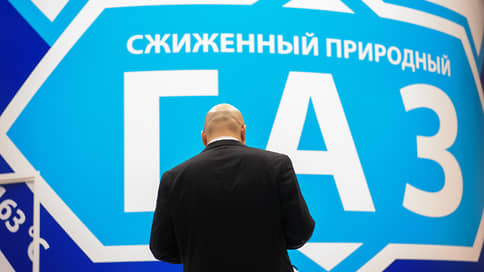Exchange prices for LPG rose by a quarter amid low supplies from manufacturers
[ad_1]

Liquefied petroleum gas (LPG) began to rise in price sharply on the stock exchange at the end of the year amid low supplies from producers. Since the beginning of the week, its value has jumped by more than a quarter, exceeding 21 thousand rubles. per ton. Market participants attribute the increased volatility to the fact that LPG producers by the middle of the month had already sold out of volumes that were shipped during the New Year holidays, but not all consumers managed to buy them at low prices. Long-term market dynamics will be determined by how LPG producers prepare for the EU embargo that comes into force in a year – if they fail to redirect supplies, the market will face a surplus.
Exchange quotations of liquefied hydrocarbon gases according to the territorial index of the Urals and Siberia on December 27 jumped by 13.3%, to 21.6 thousand rubles. per ton, and over the past three days increased by 27.4%. In general, propane-butane has been actively becoming more expensive since December 13th. Since then, its value has risen by almost 80%.
Compared to the beginning of the year, the cost of LPG increased 3.7 times.
In general, throughout the year, the cost of liquefied gases gradually recovered, winning back the fall of 2022, when, due to Western sanctions and export restrictions, prices for LPG, against the backdrop of a surplus, reached negative values. But if last year quotes rarely exceeded the mark of 10 thousand rubles. per ton, then in 2023 their gradual growth began in April. It reached its peak in early November, when the cost of propane-butane was above the level of 33 thousand rubles. per ton, but then again there was a price collapse of more than 2.5 times, to 12 thousand rubles. per ton.
A Kommersant source on the market explains the exchange dynamics by the reduction in LPG sales from the main suppliers. At the same time, the week before, companies, on the contrary, put up higher volumes for auction in order to provide consumers with raw materials for the holidays, so that, in general, the balance in monthly sales would be maintained. In turn, consumers began to actively stock up for January, taking advantage of the price bottom reached in the market (the last time LPG cost below 13 thousand rubles per ton was in mid-April), notes Kommersant’s interlocutor.
Experts agree with this opinion.
Petromarket senior consultant Alexandra Zubacheva notes that if we consider a comparable sample of the most important participants in the autogas market (these are products such as automotive propane, automotive propane-butane, technical propane-butane), the increase in prices for railway shipments from December 19 to 26 was about 30%.
According to her, this is due to a reduction in the supply of the product on the exchange during this period by approximately 30%. “So the price increase was expected, but, of course, not so sharp,” says the expert.
Ms. Zubacheva recalls that since mid-November, producers have been increasing the supply of autogas on the St. Petersburg International Trading Exchange exchange, which resulted in a decrease in wholesale prices at a rate of 5–27% per week. “According to our estimates, a significant role here was played by the fact that during this period the volumes that would be produced during the January holidays were offered for sale on the exchange. Manufacturers thus ensured the export of the product during the “dead” period,” she explains. Now, the expert notes, volumes that will be produced after the holidays are being offered for sale. For the second week, supply on the exchange has been decreasing, but demand remains high, which ultimately led to a sharp increase in exchange prices, although they are still far from reaching the level of mid-November. “It’s difficult to say how long this growth will last. Manufacturers’ decisions are influenced by many factors,” says Alexandra Zubacheva.
A Kommersant source on the market believes that in the future the cost of LPG will largely depend on how effectively its producers (NOVATEK, SIBUR and the largest oil companies) will be able to redirect their supplies, taking into account the fact that by the end of 2024 the EU ban will come into force for the import of these raw materials from Russia. Liquefied gases were blacklisted as part of the 12th package of EU sanctions. Now Europe accounts for about 75% of LPG exports from Russia (about 3.5 million tons per year). But the ban will take effect with a lag of 12 months, so companies have time to adapt, market participants say: both diversification of exports and growth in LPG processing within the country are possible. However, they may start canceling contracts with Russian suppliers in Europe even earlier than scheduled for political reasons. And if new sales areas are not found, then Kommersant’s interlocutors believe that a surplus will again arise in Russia, which will lead to a drop in prices on the stock exchange to the values of 2022.
[ad_2]
Source link





